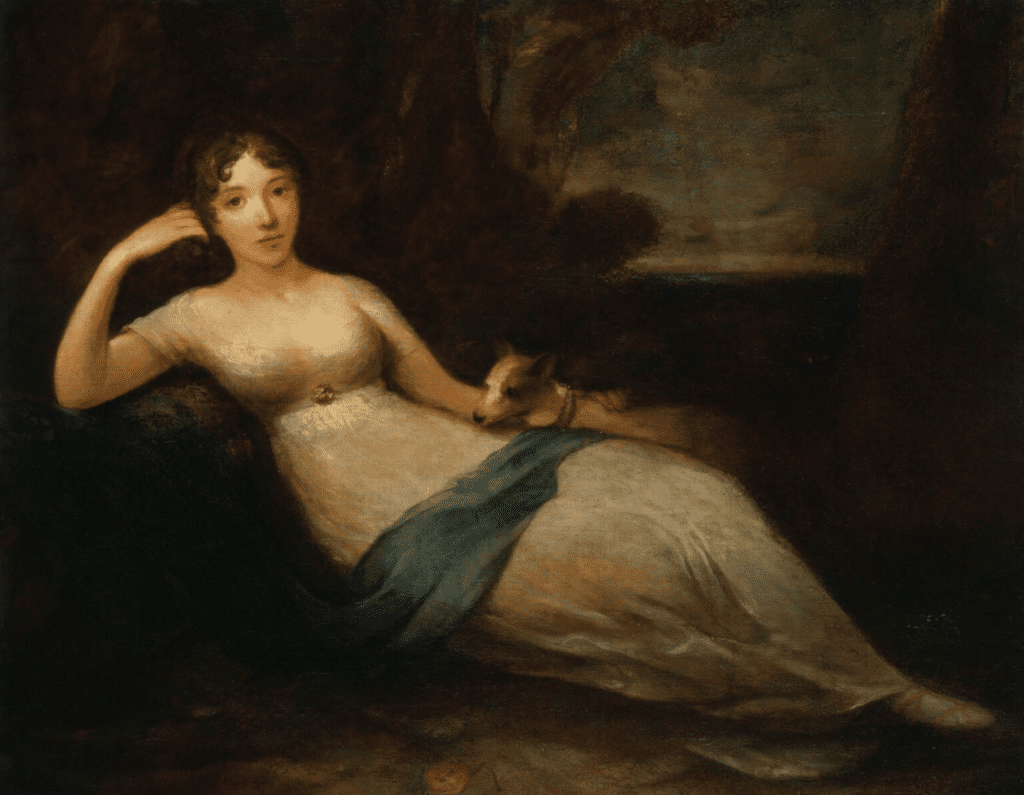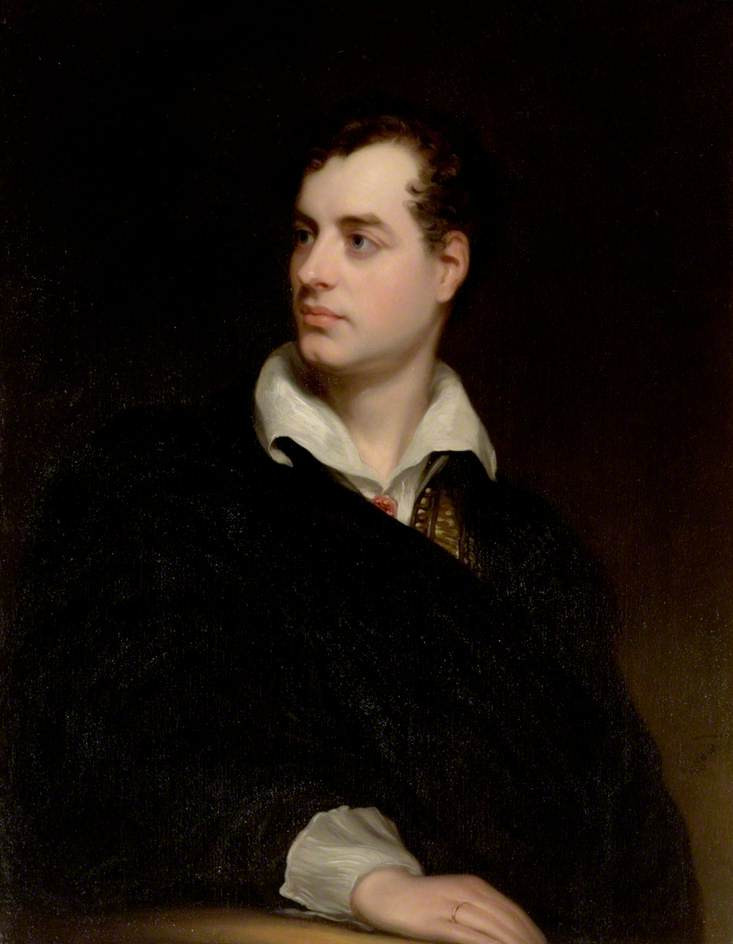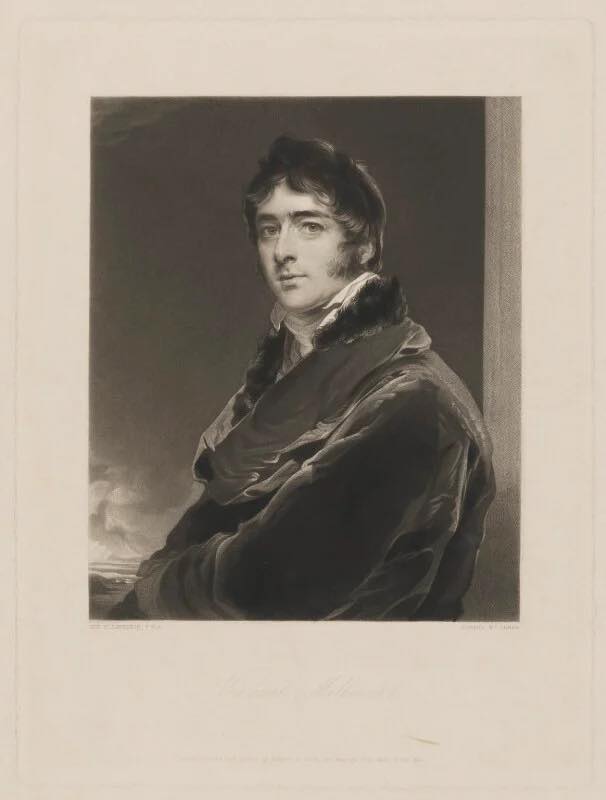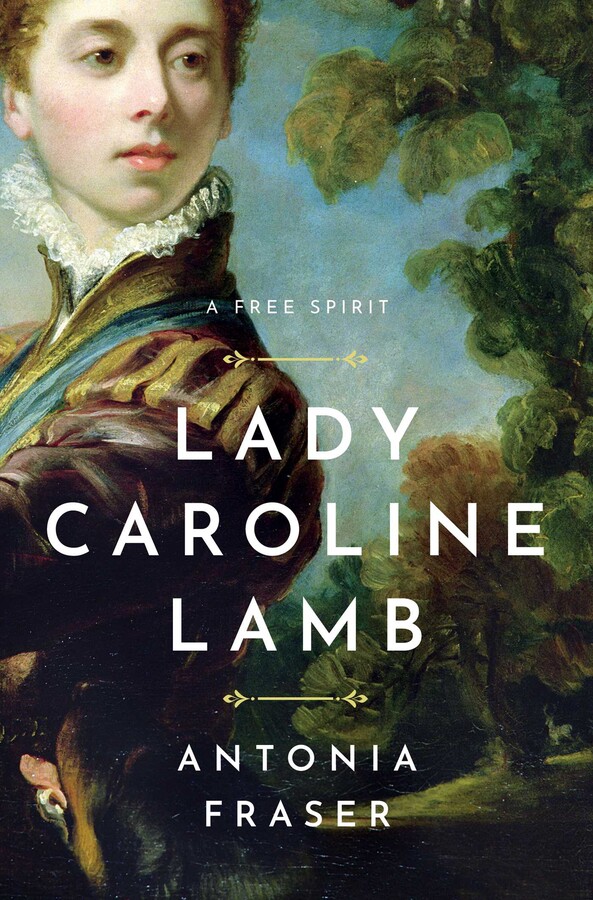Born to tremendous wealth and status, Caroline Ponsonby was the only daughter of the Earl and Countess of Bessborough. Born at the end of the 18th century, Caroline was entirely uninterested in following the strict protocols of the era. It’s reported she was a rather wild child and a bit of a tomboy, galavanting with her Cavendish cousins. She was also incredibly bright and highly education, speaking numerous languages and writing music. At 19, she married William Lamb, who eventually inherited his father’s title as Viscount Melbourne.
Caroline would recount how she had fallen in love with young William Lamb…at a party at their house. She was in her early teens and he was six years older. He was reading poetry aloud. … Intensely romantic, the young Caroline was also a great lover of poetry. It is easy to believe that the combinations of a good-looking young man and the book in his hand was irresistible. ~Loc. 294
On paper, William and Caroline should have had a steady and pleasant marriage. The two had three children, but just one survived infancy. Though hardly cut out to become the typical mother, there’s no doubt losing two children affected both parents and their marriage. More, their surviving son Augustus suffered from some kind of mental illness and possibly developmental issues as well. Caroline enjoyed spending time with him, displaying a rare patience for the era, and refused to hear of suggestions for life at an asylum.

Always in search of excitement and possessing a romantic spirit, Caroline soon began to look for thrill in society. She, like many in literary circles, was enthralled with the brooding work of Lord Byron. His sort-of-autobiographic poem “Childe Harold’s Pilgrimage” introduced the idea of a dark, moody Byronic hero. Caroline sent him a fan letter (no doubt one of many from swooning ladies) and they soon met and began an affair.
Neither party was subtle by nature, nor was their romance. It was more than common knowledge in London, and even Great Britain. They were two celebrities, each proponents of the Romantic movements, swept up in a mad entanglement.
For his part, William was extraordinarily patient with his erratic wife. Though not happy about her actions, he truly cared for Caroline and refused the insistent pleadings of his family to divorce, or at least separate, from Caroline. It seems he missed her and hoped she would return to their lives once the noted rapscallion moved on to another woman.
He was half right.

Byron moved on, but Caroline couldn’t. While he continued wooing more aristocrats and actresses alike, Caroline became maudlin. She wrote desperate letters and kept a heartbreak notebook, filled with scribblings and musings about him. Her family, including William, worried for her mental state and insisted she go to Ireland to remove herself from the society scene and recover (The Bessboroughs were Irish gentry).
Author Antonia Fraser deals with all of these disparate, complicated characters gently. What could easily devolve into a trashy soap opera or a cheap romance. Fraser finds the humanity in actions from two centuries ago. She make no excuses, but neither does she condemn. Instead, Fraser sweeps the reader along with her to the unbelievable parties, to experience the societal pressure, to see indelible brilliance at the moment it was born. Importantly, she give Lady Caroline Lamb a voice, however desperate, and agency. She is not a pathetic, wispy thing. She is deeply emotional and deeply troubled, but she is not without purpose.
For years, Caroline begged Byron to rekindle their relationship. Byron grew increasingly annoyed by Caroline, all while leaving a trail of other brokenhearted women in his wake. He became obsessed with the fight for independence in Greece and left for the Mediterranean, where he died of a fever at 36. Caroline herself died just four years later at 42.

I felt…a sort of impossibility of believing that I should never see her countenance or hear her voice again, and a sort of sense of desolation, solitude and carelessness about everything when I forced myself to remember that she really was gone.” William Lamb on the death of his wife
Augustus died four years later. Well-meaning friends tried to convince William to remarry, but he staunchly refused. Instead, William devoted himself to politics, eventually becoming prime minister under the very young Queen Victoria. She relied heavily upon his advice and guidance in the first years of her reign. He died at 1848, without an heir. The Melbourne title passed to his younger brother.
Fraser’s biography teases out the many facets of a once one-sided story. Lady Caroline Lamb may not have been an easy friend to have, but it would never be boring. We are one shade closer to knowing her with this fine book.
My thanks to Pegasus Books for the advanced copy.
Publisher: Pegasus Books (June 6, 2023)
Language: English
Hardcover: 224 pages
ISBN-10: 1639364056

